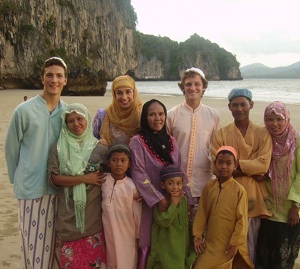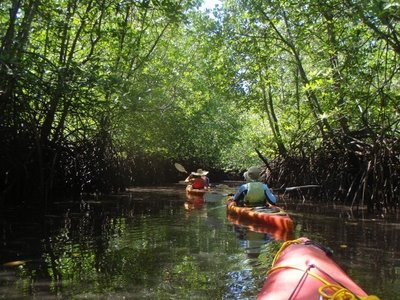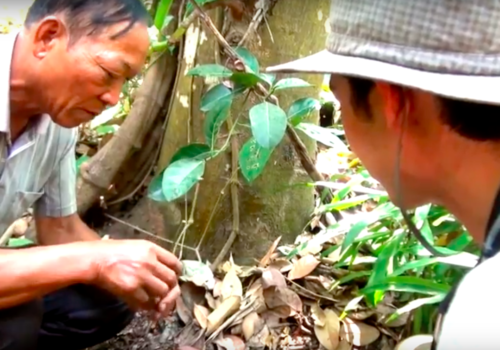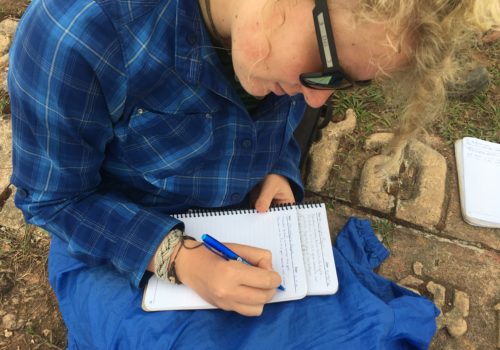
Jeremy, Rebecca and Jonathan with their host families (Bang I'et, Ma' and A'Lee). From Jeremey's blog.
The students are back from the coastal course – sea kayaking through mangroves, skin diving reefs, camping on the beach, and living with host families in a small fishing village on the coast of Trang. While we had a few big storms, the weather was good overall, and it was a great course – the students really got into the material, worked (and played) hard, and learned a lot. A highlight of the course, and a great capstone to the semester, is staying with the host families in this mostly Muslim fishing village. The families are amazing, their hospitality humbling, creating a very real connection between the students and their families.
Here are some highlights from the student blogs:
From Acadia:
As we came back to our guesthouse on Ko Mook from snorkelling off Ko Chu-ah, the tide was very low, exposing the extensive mud flats offshore of Ko Mook. Our boats went in as far as they could and we walked the rest of the way in to the island. While a long pier juts out a little ways down along the road to remedy (partially) this problem, it is not used much by local residents. Instead, they walk and haul their catch sometimes 150 yards, preferring to leave their boats cradled in the soft intertidal zone. Thinking about another extreme, NYC, where every shoreline has been extended with landfill and concrete piers, it seems in many ways the villagers on Ko Mook have got it right.
The night before, students reflected on how people here seem to have stronger relationships with natural cycles and phenomena than we do in the U.S. This has been a recurring theme throughout my time here in Thailand. In part because of the favorable climate, folks are able to incorporate a lot of outdoor space into their primary living area and seem to like this set-up despite the bugs and rain and critters passing through. Nature still has the upper hand in the local community on Ko Mook, as well. Low season for the tourism industry occurs during the monsoon season when the channel is too choppy for the island’s small boats to safely transport visitors. On a stormy day, the fishermen stay on shore and talk with their friends or do chores around the house rather than brave the elements as larger trawlers are able to do. Women follow the tides out and collect clams on the mud flats, only one example of how intimately their lives are tied to the moon cycle.
Both Jeremy and Jonathan posted some great photos on their blogs of the course.
Here are a couple of photos of the different type of sea kayaking we do on the course from Jonathan:

Crossing from the mainland to Mook Island.

Paddling through the mangroves.
Here are some photos from Jeremy:

Anna, Bang I'et and Pi Toto listening to Bang Hed talk about community forests and mangroves.

Ma' roasts cashews fresh off the tree.



